Audio systems play a pivotal role in creating immersive experiences in home entertainment. Among the various configurations available, 5.1 and 7.1 setups stand out as popular choices for discerning consumers. Understanding the disparities between these systems can empower individuals to make informed decisions when setting up their home theaters or sound setups.
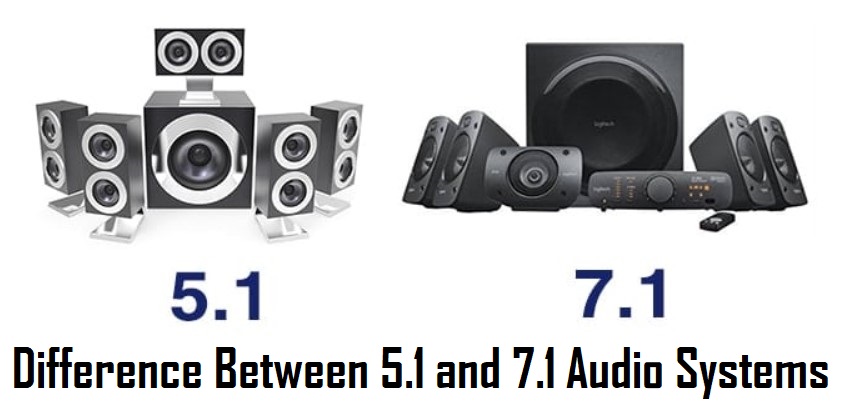
The surge in popularity of home theater systems is evident as more individuals transition to consuming digital content at home, especially in light of the post-pandemic landscape. However, a common dilemma arises when considering whether to opt for a 5.1 or 7.1 surround sound setup. For those deliberating on the ideal sound system, it’s prudent to objectively evaluate both surround sound configurations. Let’s delve into a comparative analysis of these setups to aid in your decision-making process.
Understanding Channels and Speakers in Surround Sound
Before delving into specific formats, let’s establish the foundation. Surround sound systems rely on multiple channels, each carrying a distinct audio signal. These channels are then directed to individual speakers strategically positioned around the listener. The number of channels determines the complexity and richness of the soundscape.
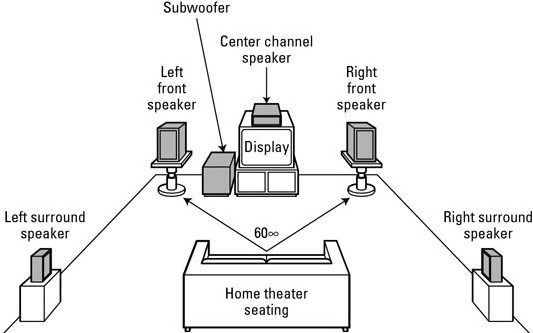
Difference Between 5.1 and 7.1 Surround Sound Audio Systems
Understanding the disparities between these configurations is crucial for crafting the perfect audio environment. Let’s explore the key differences between 5.1 and 7.1 audio systems
Channel Configuration
Channel Configuration addresses the fundamental setup of audio systems, delineating the arrangement and number of channels or speakers involved.
5.1 Audio System
This configuration comprises six channels/speakers, namely front left, front center, front right, rear left, rear right, and one subwoofer (denoted as the .1). Its purpose is to envelop the listener in a surround sound ambiance by dispersing audio across the room. With 6 speakers in total, including a center speaker and a subwoofer for low-frequency effects like explosions, 5.1 surround sound offers a standard industry setup. Its simplicity in setup, affordability, and suitability for small to medium-sized rooms makes it a popular choice.
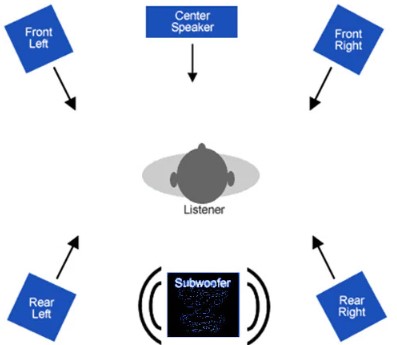
7.1 Audio System
In contrast, the 7.1 setup integrates eight channels/speakers, mirroring the 5.1 arrangement while adding two supplementary speakers, typically positioned at the sides or rear of the listener. These additional speakers augment the surround sound experience, contributing to a heightened sense of immersion. With 8 sound channels, 7.1 surround sound utilizes the same 6 speakers as the 5.1 setup, along with two additional side speakers. However, due to the increased speaker count, 7.1 surround sound entails higher costs and is best suited for larger rooms.
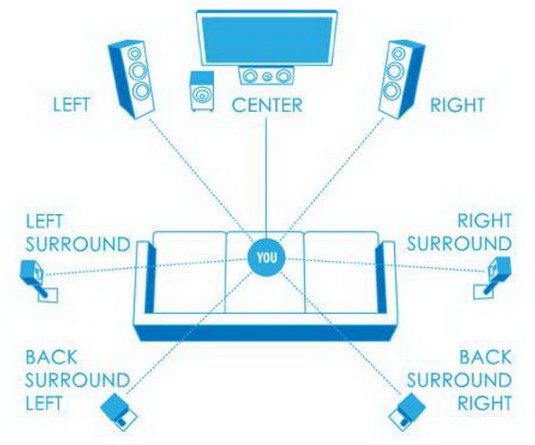
Spatial Sound Quality
Let’s get to elucidate the qualitative aspects of audio reproduction and its impact on the overall enjoyment of entertainment content.
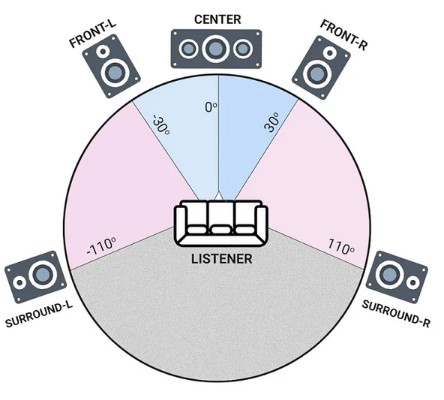
5.1 Audio System
The 5.1 audio configuration delivers exceptional surround sound quality, catering to the needs of most home theaters. It creates an enveloping auditory experience, ideal for enjoying movies, music, and gaming alike. The distribution of sound across multiple channels immerses the listener in a rich audio environment, enhancing the overall entertainment experience.
7.1 Audio System
Building upon the immersive foundation of 5.1 audio, the 7.1 system elevates the auditory journey by introducing additional depth and dimension to the soundstage. The inclusion of extra speakers enhances the precision and directionality of sound, resulting in a more nuanced and immersive listening experience. This advanced setup is particularly well-suited for larger rooms where the expanded audio coverage can fully captivate the listener, offering a truly encompassing audio experience.
Content Compatibility
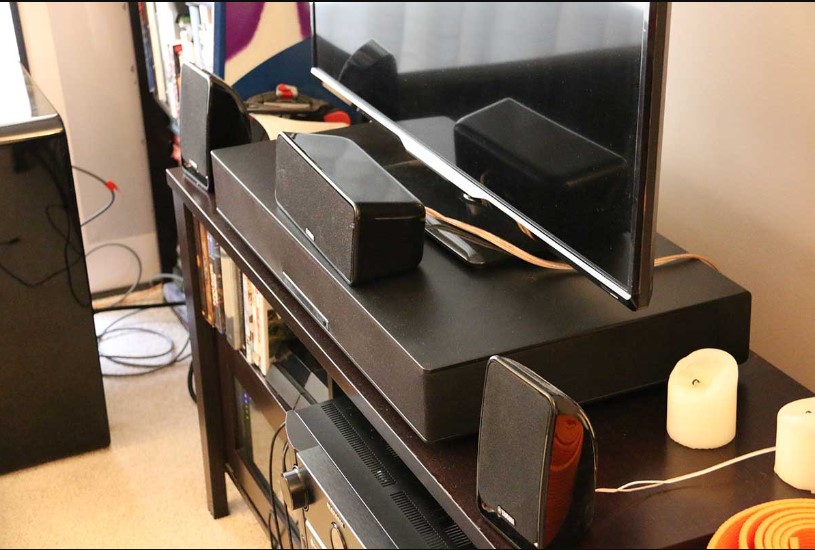
5.1 Audio System
The 5.1 surround sound format enjoys widespread support across various media platforms, including movies, games, and streaming services. Its ubiquitous compatibility makes it an accessible choice for consumers seeking immersive surround sound experiences. Whether enjoying blockbuster movies, action-packed games, or streaming their favorite shows, users can rely on the versatility of 5.1 surround sound to enhance their multimedia consumption.
7.1 Audio System
While content tailored specifically for 7.1 audio systems is less prevalent, modern technology bridges the gap by offering solutions for enhancing the listening experience. Although dedicated 7.1 content may be less common, many contemporary receivers feature upmixing capabilities, allowing them to simulate a 7.1 surround sound experience from standard 5.1 content. This innovative approach ensures that users can enjoy an enriched audio experience, even with content that isn’t explicitly mixed for 7.1 systems.
Room Size and Layout Considerations
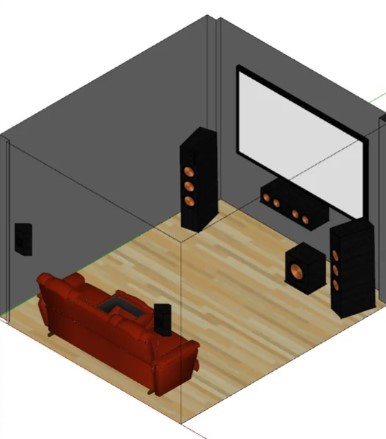
5.1 Audio System
Tailored for small to medium-sized rooms, the 5.1 audio system offers an ideal solution for immersive sound without overwhelming the space. Its compact setup effectively fills the room with rich audio, eliminating the necessity for additional speakers. This streamlined configuration ensures a seamless integration into various room layouts, providing an optimal audio experience without sacrificing space or aesthetics.
7.1 Audio System
Designed with larger rooms in mind, the 7.1 audio system excels in delivering enhanced depth and dimensionality to accommodate expansive listening spaces. The inclusion of additional speakers enriches the audio environment, providing a more encompassing and immersive soundstage. However, to fully capitalize on the benefits of a 7.1 setup, careful consideration must be given to the room layout to ensure optimal placement of the supplementary speakers. This strategic positioning maximizes the immersive potential of the system, allowing listeners to fully appreciate the immersive audio experience.
Cost and Installation
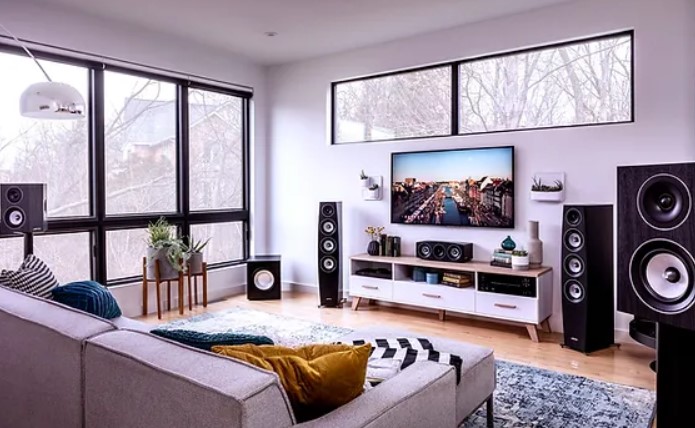
5.1 Audio System
Recognized for its affordability and simplicity, the 5.1 audio system presents a budget-friendly option for those venturing into home theater setups. With fewer components involved, installation is straightforward, making it an accessible choice for beginners in the realm of home entertainment. Its cost-effective nature and ease of installation make the 5.1 system an attractive starting point for individuals looking to enhance their audio experience without breaking the bank.
7.1 Audio System
In contrast, the 7.1 audio system commands a higher price tag owing to the inclusion of additional speakers and potentially a receiver capable of accommodating more channels. The complexity of installation increases proportionally with the number of speakers, necessitating meticulous planning and possibly professional assistance for optimal placement. While the initial investment may be greater, the enhanced audio immersion and expansive soundstage offered by the 7.1 system justify the added cost and effort for enthusiasts seeking a premium home theater experience.
Upgrade Path
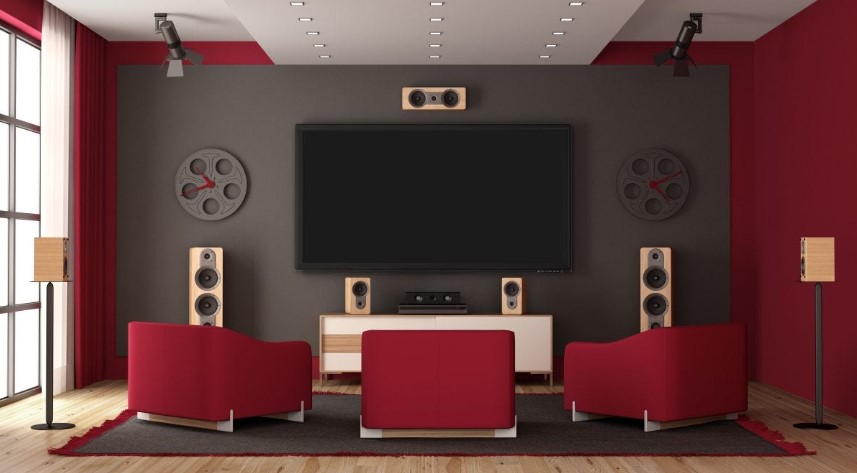
5.1 Audio System
A common progression for users begins with a 5.1 audio system, serving as a foundational setup that satisfies initial audio needs while providing room for future expansion. As interest and budget allowances evolve, many users opt to upgrade to a 7.1 system or beyond. This step-by-step approach allows enthusiasts to gradually enhance their audio setup, adapting it to their evolving preferences and requirements. Starting with a 5.1 system offers a solid foundation upon which users can build and customize their home theater experience over time.
7.1 Audio System
For those already immersed in the realm of advanced audio setups, such as a 7.1 system, the upgrade path extends further to embrace even more sophisticated configurations. With a 7.1 system as the cornerstone, enthusiasts can explore upgrades to a 9.1 setup or venture into Atmos configurations, introducing additional layers of audio immersion. This progression allows users to continually elevate their audio experience, unlocking new dimensions of sound and ensuring that their setup remains at the forefront of home entertainment technology.
Comparison of 5.1 vs 7.1 Audio System
| Aspect | 5.1 Audio System | 7.1 Audio System |
| Number of Channels | 6 (Front L/R, Center, Rear L/R, Subwoofer) | 8 (Same as 5.1 + 2 Additional Surround) |
| Ideal Room Size | Small to Medium | Medium to Large |
| Spatial Sound Quality | Excellent | Enhanced with Added Depth and Precision |
| Content Compatibility | Widely Supported | Less Common, Upmixing Capability Available |
| Cost and Installation | Affordable and Easy | More Expensive, Potentially Complex Installation |
| Upgrade Path | Common Starting Point for Enthusiasts | Further Expansion Options Available |
| Standard Channels | 5 Standard Channels + 1 Subwoofer | 7 Standard Channels + 1 Subwoofer |
| Available Formats | Dolby Digital, DTS | Dolby TrueHD, DTS-HD Master Audio |
| Room Size Suitability | Ideal for Small to Medium Rooms | Ideal for Large Rooms |
| Cost Comparison | Relatively Cheaper Than 7.1 System | More Expensive Than 5.1 System |
| Ease of Installation | Offers the ease of simpler set up | Requires more involved configuration |
Advantages of 5.1 Surround Sound
- 5.1 systems are more common than 7.1 setups, making it easier to find troubleshooting resources and community support online.
- Often available as “home theater in a box” packages, 5.1 systems are user-friendly and straightforward to set up, catering to a larger user base.
- With fewer wires to manage compared to 7.1 systems, setting up a 5.1 system is generally more straightforward and aesthetically pleasing.
- The simplicity of a 5.1 setup makes it suitable for most home theater environments, providing sufficient audio coverage for typical room sizes.
Disadvantages of 5.1 Surround Sound
- In larger spaces, such as expansive living rooms or home theaters, the immersive effect of surround sound may be less pronounced with a 5.1 system.
- Areas with considerable distance behind the primary listening location may experience reduced surround sound immersion compared to smaller rooms.
- Users may encounter limitations in accessing the full audio capabilities of select media that are tailored for 7.1 audio setups.
Advantages of 7.1 Surround Sound
- Ideal for larger spaces where sound dispersion may be a concern, a 7.1 system offers a more immersive surround sound experience.
- The additional surround speakers contribute to a richer audio environment, ensuring that sound reaches every corner of the room.
- Media content optimized for 7.1 surround sound delivers clearer audio fidelity compared to 5.1 systems, enhancing the overall listening experience.
- High-quality media intended for 7.1 systems exhibits greater clarity and depth, providing listeners with a more immersive audio journey.
Disadvantages of 7.1 Surround Sound
- Achieving a balanced audio mix can be challenging in compact environments, potentially detracting from the overall listening experience.
- Unlike some 5.1 systems sold as complete packages, 7.1 setups often require purchasing individual components, leading to increased complexity and cost.
- Troubleshooting and setup assistance may be more challenging to find for 7.1 systems due to the specific nature of their components, potentially requiring more time and effort during installation and troubleshooting.
Room Suitability for Audio Systems
Determining whether a 5.1 or 7.1 sound system is suitable for your room depends on several factors. The size of your room, the presence of reflective surfaces, and the positioning of speakers all play a crucial role.
Room Size
Larger rooms require more speakers to fill the space effectively. Rooms smaller than 350 square feet may not be suitable for 7.1 systems.
Furniture
Hard surfaces reflect sound, potentially hindering the benefits of additional speakers. Soft furnishings help absorb sound, maintaining sound integrity.
Listening Position
7.1 systems surround the listener with speakers, enhancing the surround sound experience. Limited space behind the listening area may affect the effectiveness of rear speakers.
Choosing Between 5.1 and 7.1 for an A/V Receiver
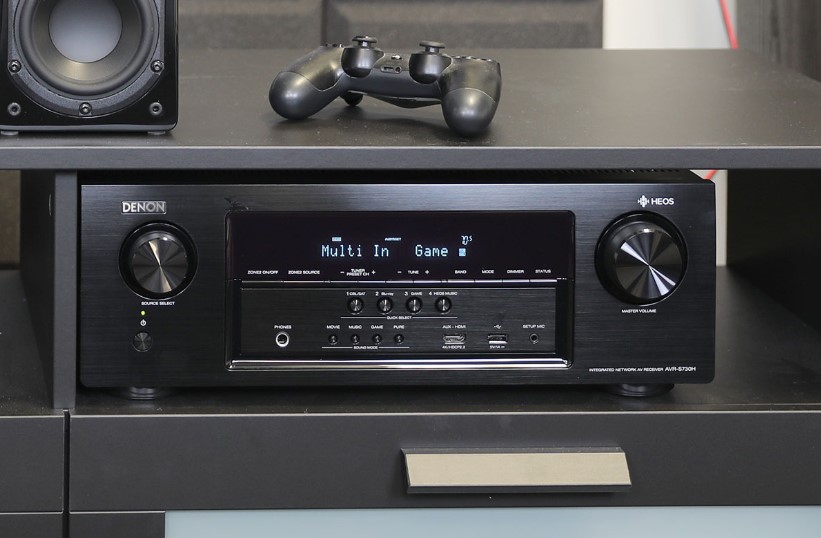
When selecting the ideal surround sound system for an A/V receiver, several factors come into play. It’s crucial to consider that an A/V receiver will support all channels available in a surround system. However, opting for a receiver equipped with outputs for a 7.1 system is preferable.
It’s worth noting that a 7.1 receiver can seamlessly accommodate a 5.1 surround system. Furthermore, certain AV receivers possess the capability to detect whether a 5.1 or 7.1 system is connected. Additionally, one of the advantages of a 5.1 sound system lies in its affordability.
Conclusion
In conclusion, the choice between a 5.1 and 7.1 audio system ultimately hinges on various factors such as room size, budget, and personal preferences. Both configurations offer unique advantages and disadvantages, catering to different needs and environments. While a 5.1 system provides a cost-effective and accessible option suitable for smaller rooms, a 7.1 setup offers enhanced immersion and audio depth, ideal for larger spaces. Understanding the nuances of each system empowers users to make informed decisions tailored to their specific circumstances, ensuring an optimal home theater experience.
We value your opinion! Share your thoughts on our article comparing 5.1 and 7.1 audio systems. Did you find the information helpful in making your decision? Were there any aspects you wished were covered in more detail? Let us know your feedback and suggestions for future articles in the comments below. Your input helps us improve and provide content that resonates with our readers.
When setting up a 5.1 or 7.1 audio system, clear communication among your entire production crew is essential to ensure precise speaker placement and optimal sound quality. A professional wireless intercom system can help your team coordinate smoothly and efficiently, especially during live events, concerts, or detailed audio setups.
Frequently Asked Questions
What is the best audio system for a small apartment, 5.1 or 7.1?
For a small apartment, a 5.1 audio system is generally more suitable due to its compact setup and adequate audio coverage for smaller spaces. The additional speakers in a 7.1 system may not be fully utilized in a limited area, making a 5.1 system a more practical choice for most small apartments.
Can I play 7.1 audio on a 5.1 system?
Yes, you can play 7.1 audio on a 5.1 system. However, the additional channels of the 7.1 audio will be downmixed to fit the capabilities of the 5.1 system. While you may not experience the full surround sound intended for a 7.1 setup, you can still enjoy the audio content on your 5.1 system.
How significant is the difference between 5.1 and 7.1 audio in video games?
The difference between 5.1 and 7.1 audio in video games can vary depending on the game’s design and the capabilities of your audio setup. In general, a 7.1 system may offer more precise directional audio, enhancing the immersive gaming experience, particularly in games optimized for multi-channel audio.
Do all Blu-ray movies support 7.1 audio?
Not all Blu-ray movies support 7.1 audio, but many do. The availability of 7.1 audio depends on how the movie was produced and whether it was mixed and released with 7.1 audio tracks. Most modern Blu-ray releases offer 7.1 audio options for enhanced surround sound experiences.
Is it worth upgrading from 5.1 to 7.1 in a medium-sized room?
Whether it’s worth upgrading from 5.1 to 7.1 in a medium-sized room depends on your personal preferences and priorities. A 7.1 system can offer additional audio immersion and depth, particularly in larger rooms. However, in a medium-sized room, the difference may be less noticeable, and the upgrade may not be necessary for everyone.
What additional equipment do I need to buy for a 7.1 setup if I already have a 5.1 system?
To upgrade from a 5.1 to a 7.1 system, you will need additional speakers and possibly a receiver capable of handling more channels. This includes two additional surround speakers, typically positioned on the sides or rear of the listener, to complete the 7.1 setup.
How do I know if a movie is mixed for 5.1 or 7.1 audio?
You can usually find information about a movie’s audio specifications on its packaging or in its digital description. Look for details about the audio format, which may indicate whether the movie is mixed for 5.1 or 7.1 audio. Additionally, online resources and forums dedicated to home theater enthusiasts may provide insights into a movie’s audio quality and format.
Can I use wireless speakers for a 7.1 system?
Yes, you can use wireless speakers for a 7.1 system. Many modern home theater systems offer wireless speaker options, allowing for more flexibility in speaker placement without the need for extensive wiring. However, it’s essential to ensure that the wireless speakers are compatible with your audio setup and provide reliable performance.
What are the best speaker placements for a 7.1 system?
The ideal speaker placements for a 7.1 system include front left, center, and right speakers, surround left and right speakers, rear surround left and right speakers, and a subwoofer. The front speakers should be positioned at ear level and equidistant from the primary listening position, while the surround and rear surround speakers should create an immersive audio experience by enveloping the listener.
How does upmixing from 5.1 to 7.1 work?
Upmixing from 5.1 to 7.1 involves digitally processing the audio signal to create additional audio channels for the additional speakers in a 7.1 system. This process aims to enhance the surround sound experience by distributing audio more evenly throughout the listening space. However, the effectiveness of upmixing can vary depending on the quality of the audio processing algorithm and the capabilities of your audio equipment.


































.png)





